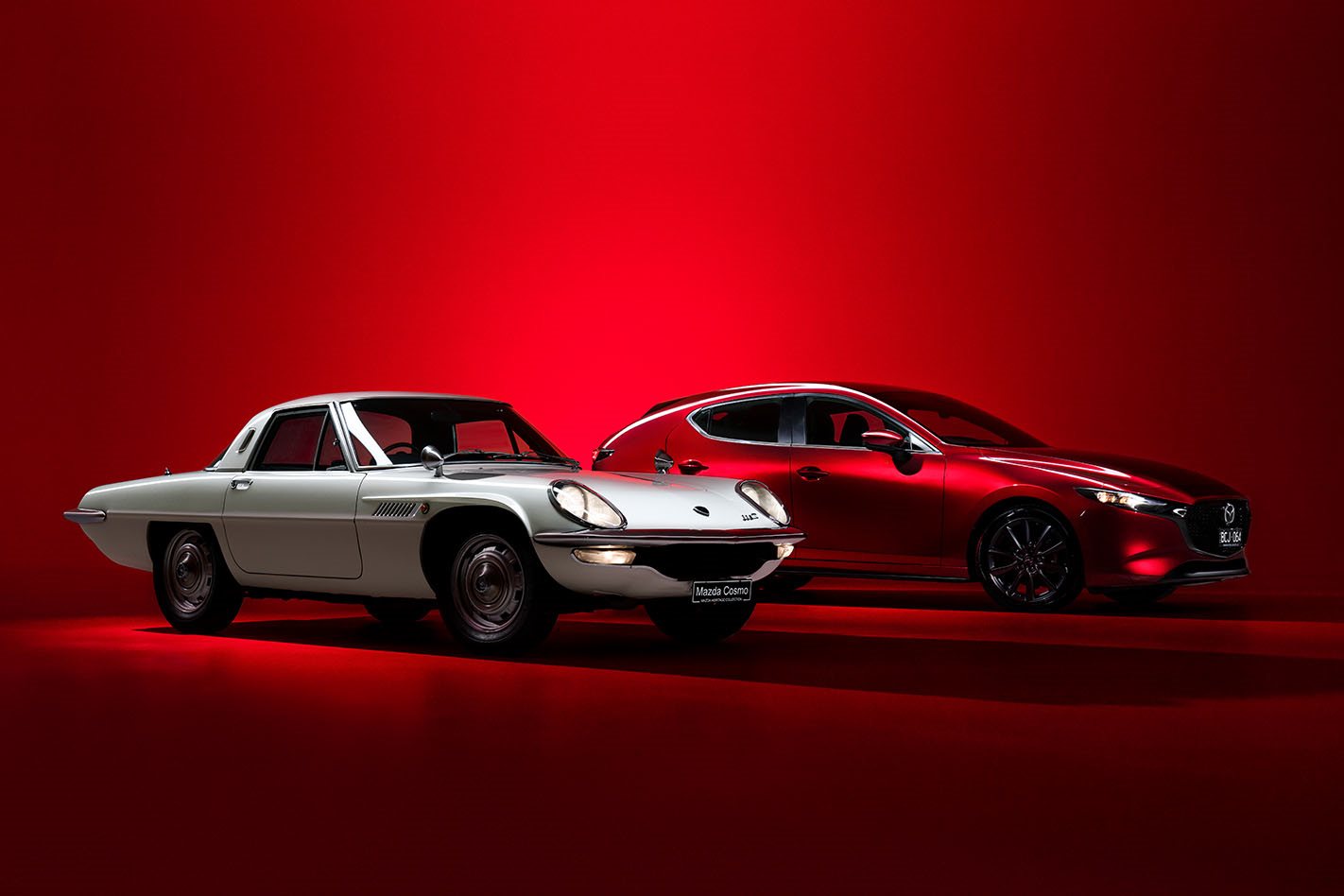Jujiro Matsuda’s lightbulb moment, it must be acknowledged, took a while to arrive.
The man who apprenticed as a foundry steel worker from age 14, and who would go on to be the founder of the Mazda car company, was 31 when his nimble mind conjured a pump specifically designed for chemicals.
The ‘Matsuda-type pump’ would be the basis for his first company.
Understanding the backstory of Mazda’s founder is pivotal to understanding the brand. It’s an unconventional path scattered with hallmarks and personality traits that would define the ‘dare to be different’ ethos which continues to permeate the company, even a century from its beginning.
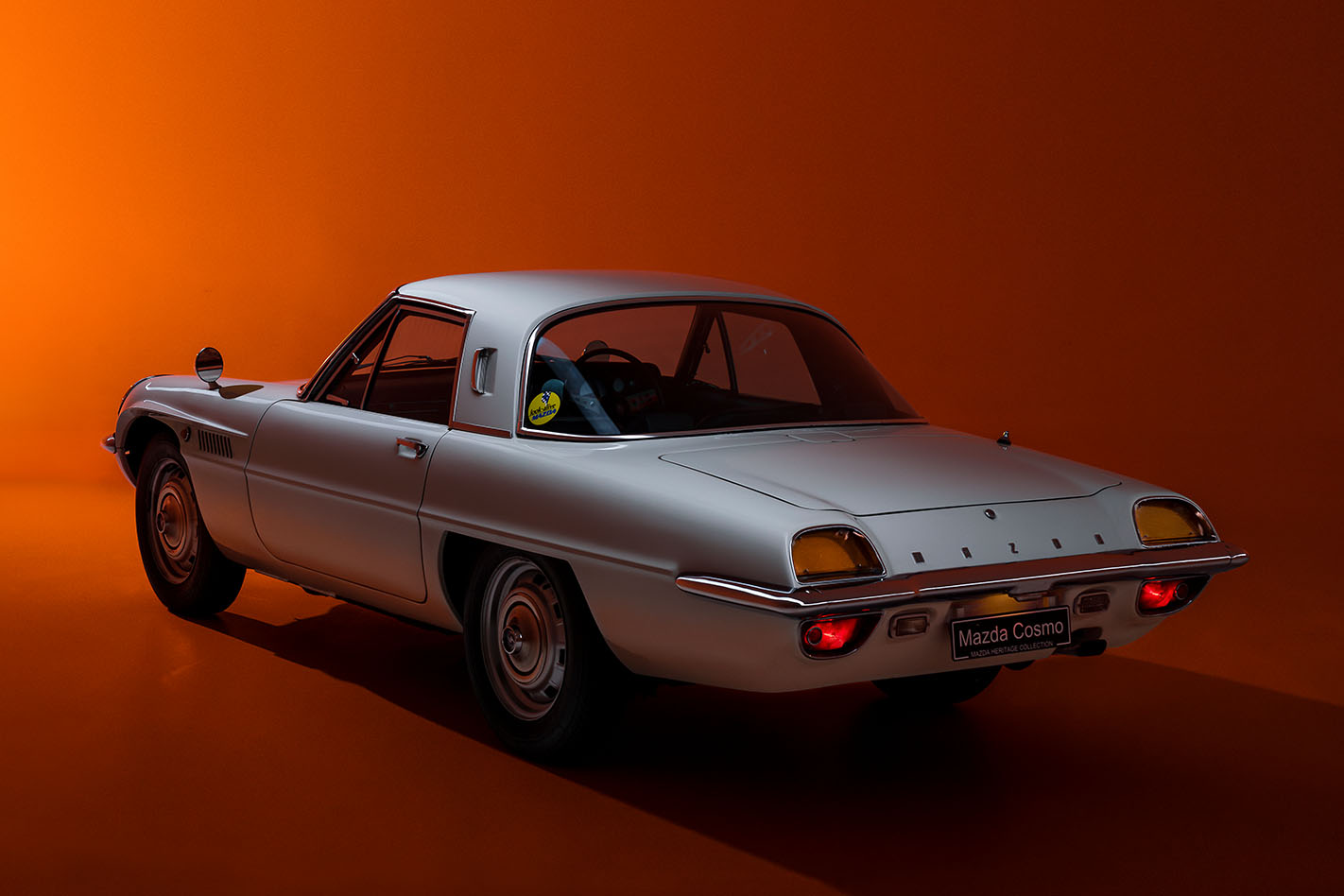
Matsuda would later go on to establish a weapons manufacturing business, cracking the big time with a deal to supply Japanese, and later Russian military forces.
He was a wealthy self-made man of 46 when he took over the Toyo Cork Kogyo Co Ltd business, but running this manufacturing operation of artificial cork would prove a testing and pivotal period, as the market for the product collapsed and his factory later burned to the ground.
From its ashes rose a machine-tool manufacturing operation, and it was eventually via this business he would spot the demand for motorised delivery and commercial vehicles. Matsuda’s offering for this burgeoning segment was a three-wheeled motorcycle configured for rear-mounted cargo, the Mazda-Go Type DA. Powered by an air-cooled single and featuring a then-novel reverse gear, the Mazda-Go nailed the brief for an affordable, nimble and versatile delivery ‘trike’ and quickly found export success.
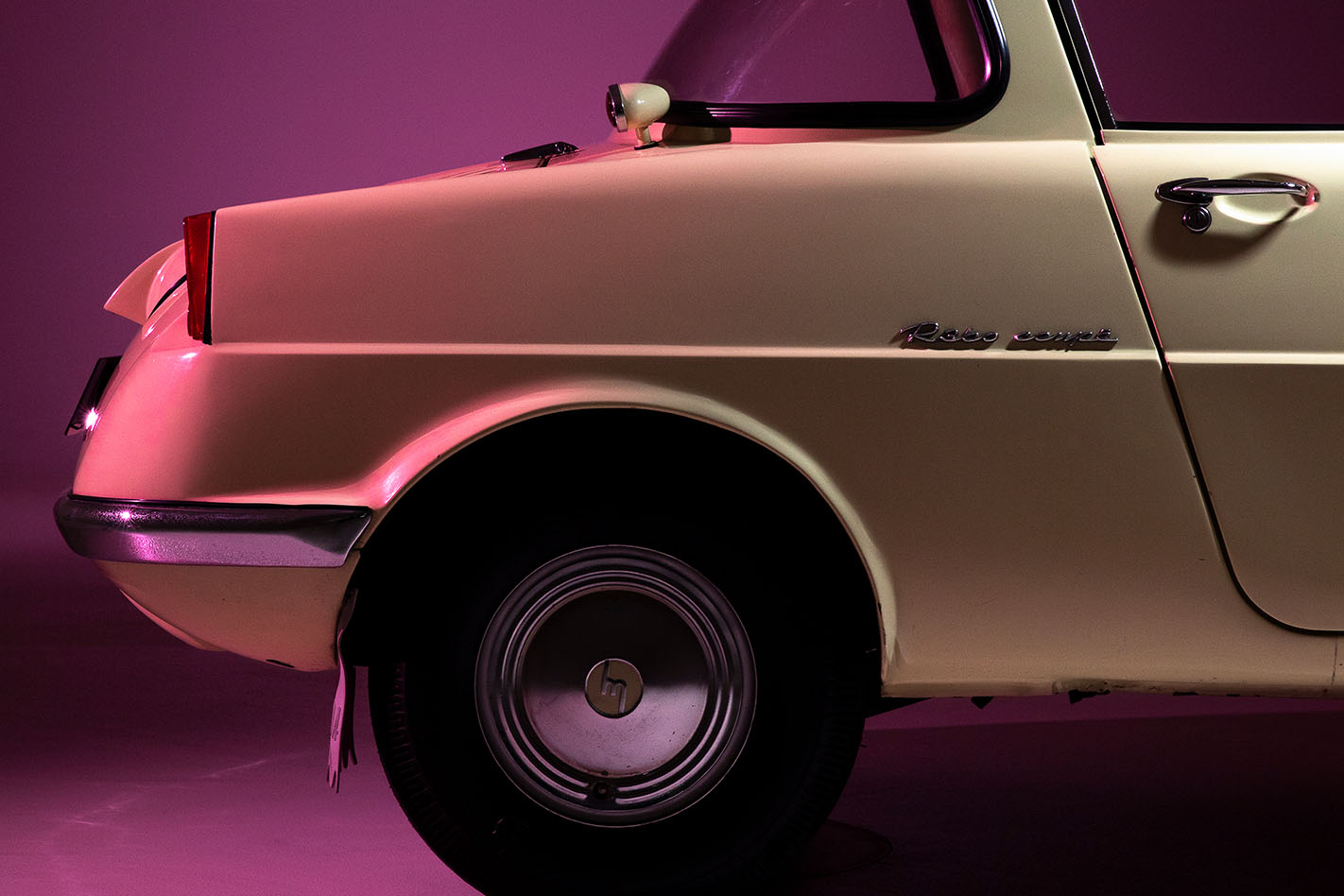
Tragedy was just around the corner, though, and the bombing of Hiroshima would do more than thwart the company’s car development ambitions. The atomic bomb was dropped on Matsuda’s 70th birthday, killing employees and one of his sons.
Production of commercial vehicles picked back up in the ’50s, but the breakthrough moment came in 1960 with the launch of the utterly huggable R360 coupe (pictured), the company’s first passenger car.
Seven years later the company had undergone a massive transformation, and the result, from a product point of view, was the rotary-engined Cosmo Sport 110S.
It’s well documented that Mazda’s history with the rotary goes back to the early 1960s when it licensed Wankel technology from West German automaker NSU. Mazda’s then-president Tsuneji Matsuda (son-in-law of founder Jujiro) believed that the company needed to come up with a notably differentiated technology to avoid the Japanese government forcing it into a corporate merger. Matsuda chose the Wankel rotary engine, and assigned Kenichi Yamamoto (who would later rise to company president) to head up a team of 47 young engineers to take the underdeveloped, problematic rotary design, and make it production ready. Allegedly Yamamoto instilled an almost Samurai-style dedication in this team, and told his engineers: “From now on, the rotary engine must be on your minds at all times, whether you are sleeping or awake.” Ah, sweet dreams at 8000rpm…
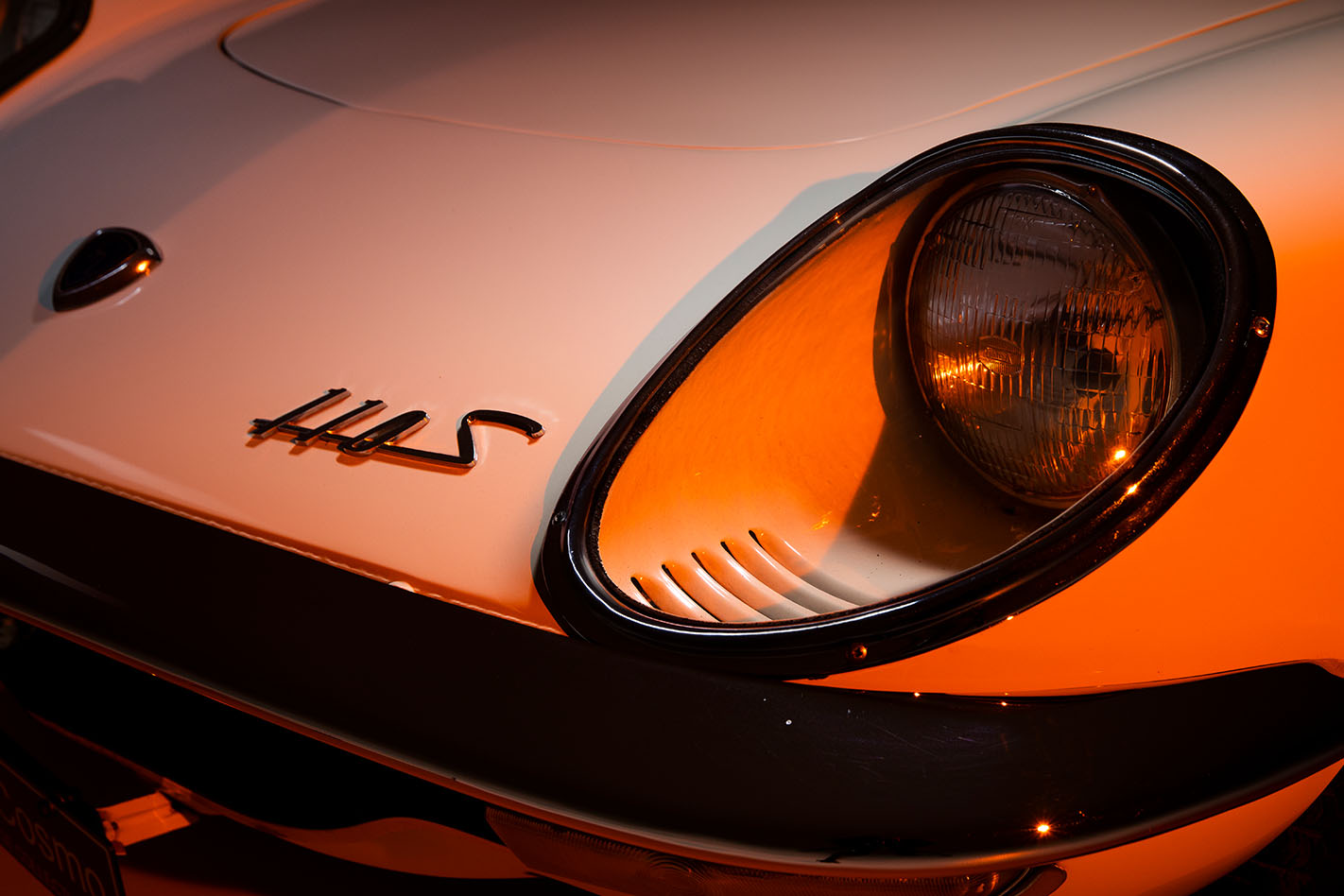
Just 1176 examples of the Cosmo Sport were built between 1967 and 1972, and while it stands as a beacon of Mazda’s stubborn corporate perseverance and overcoming engineering challenges, it was actually the R100 coupe that was the real breakthrough car; the volume model that upheld the company’s commitment to a non-piston USP with its debut in 1970 as the first mass-produced, rotary-powered car offered in North America.
Here in Australia, the Mazda backstory starts with importer Alex Findlay, who, in 1959, saw local potential in Mazda’s Romper four-wheel truck and other tri-wheeled models. He travelled to Japan with the intention of procuring a Mazda franchise in Australia, and his visit concluded with him appointed by Toyo Kogyo as the company’s unofficial Australian representative. A beachhead for the brand had been established.
From here the story gets a bit more convoluted, as several entrepreneurial types sought to establish state-based distributors’ rights, and cars like the Carol 600, Estate 800 and Luce 1500 started to find a following.
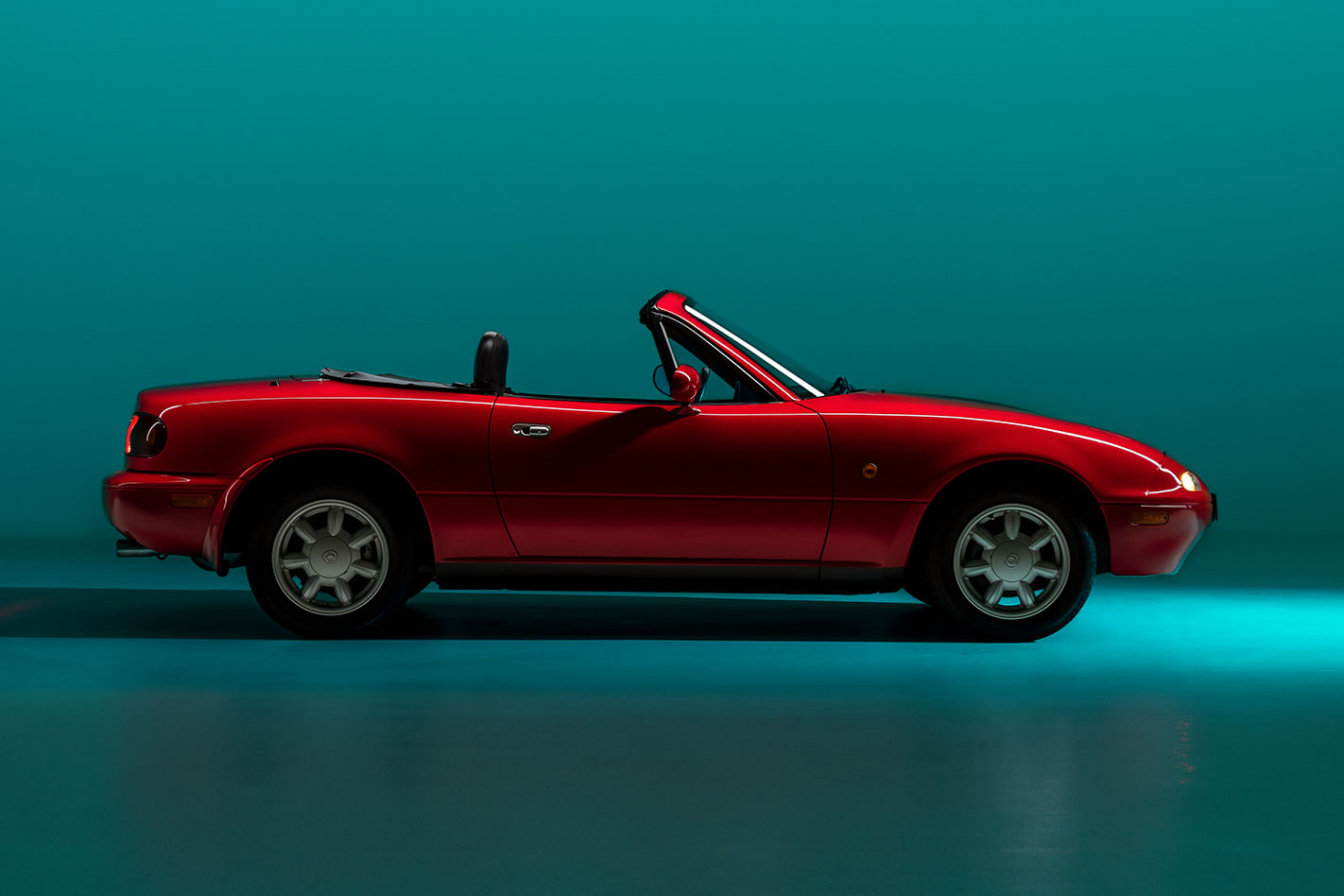
Towards the end of the ’60s, thanks to the likes of the Familia 1200, R100, Capella 1600 and RX-2, Mazda’s Australian sales broke the 10,000 per year barrier. Less than three years later in 1971, sales had done the unthinkable – nearly doubled to 19,174. Import tariff reductions came in 1973, and Mazda sales boomed again, topping 43,000 units in 1974, which represented a handy 7.4 percent market share, albeit well behind dominant Holden’s near-100,000.
Percolating in the Mazda boardroom back in Japan during this period was the ever-deepening relationship with Ford, and by 1979, the Blue Oval saw sufficient synergies and opportunities to open the chequebook and take a 25 percent stake in Mazda.
Just one year later, Mazda was about to have its Australian breakthrough moment, winning the first of its eight Wheels COTY awards with the company’s first mainstream front-drive model, the BD-generation Mazda 323.
Peter Robinson recalls that it wasn’t a difficult decision: “To discover the 1980 COTY winner we took the 323, along with the Honda Civic, Mitsubishi Colt and Nissan Pulsar on a three-day test through NSW. We also took along Holden’s 1975 COTY-winning Gemini as the small-car benchmark. Didn’t take long for us to realise that the 323 was a clear leader over the others … and vastly superior to the Gemini.”
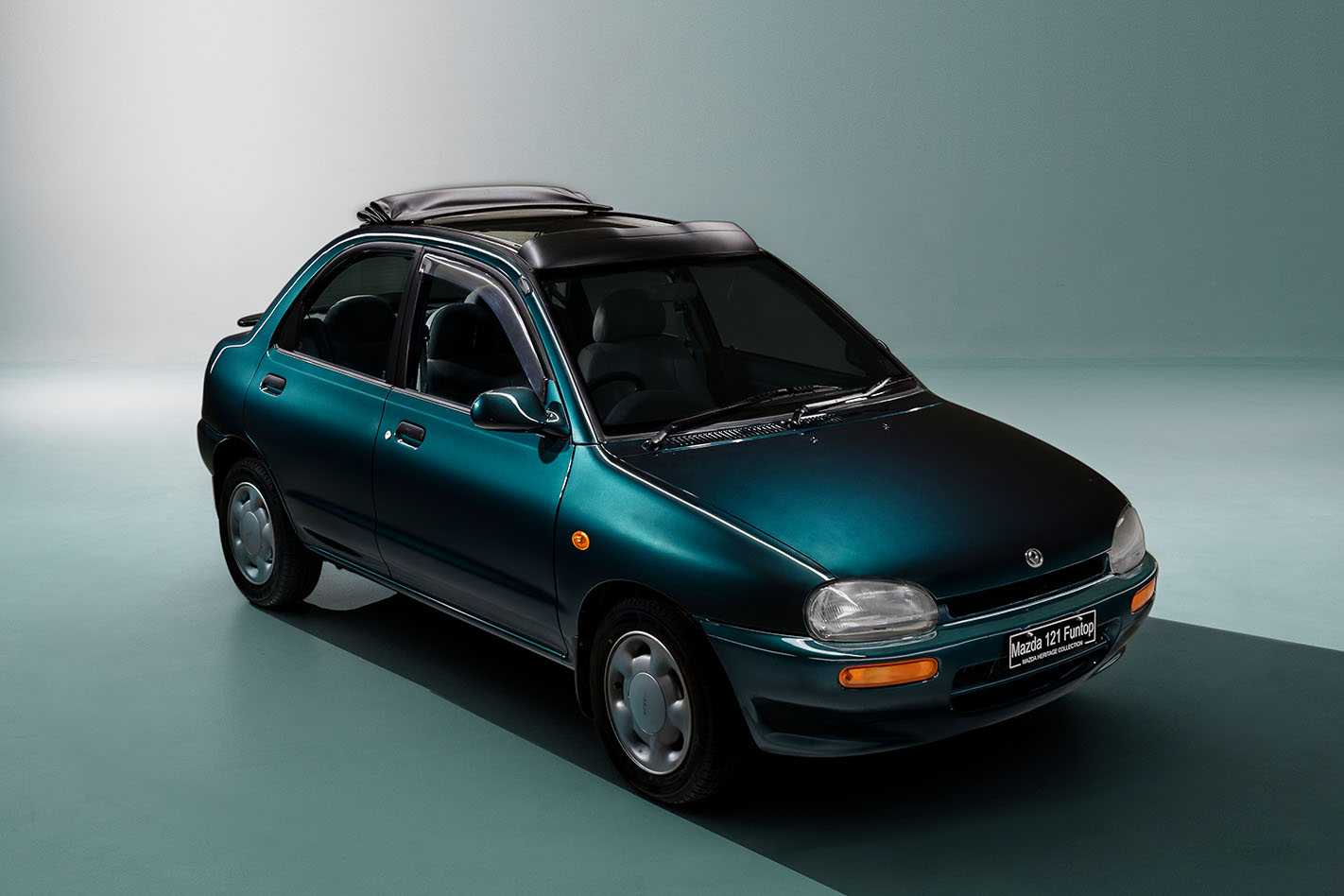
The COTY victory even prompted a limited-edition model with ‘The Winner’ emblazoned on the side. (‘Chicken Dinner!’ decal optional…)
It only took until 1983 to prove the company really was on a roll, in terms of producing class-leading cars, again snaring Wheels COTY with the GC-series 626. Mazda’s mid-sizer was co-developed with the AR-series Ford Telstar, so for the first time in the award’s history, this magazine’s marketing department’s budget was blown apart when it learned it would have to commission two trophies…
In terms of historical significance, of course, this pair pales when we consider the end of the ’80s would see Mazda deliver a car that would not just become a smash hit for the company, but would effectively rebirth a largely dormant segment and go on to become a global icon.
The Mazda product planner recognised as the progenitor of the original MX-5 was an American working at the California Design Studio in 1981 who would later join Wheels as a journalist in the ’90s, Bob Hall.
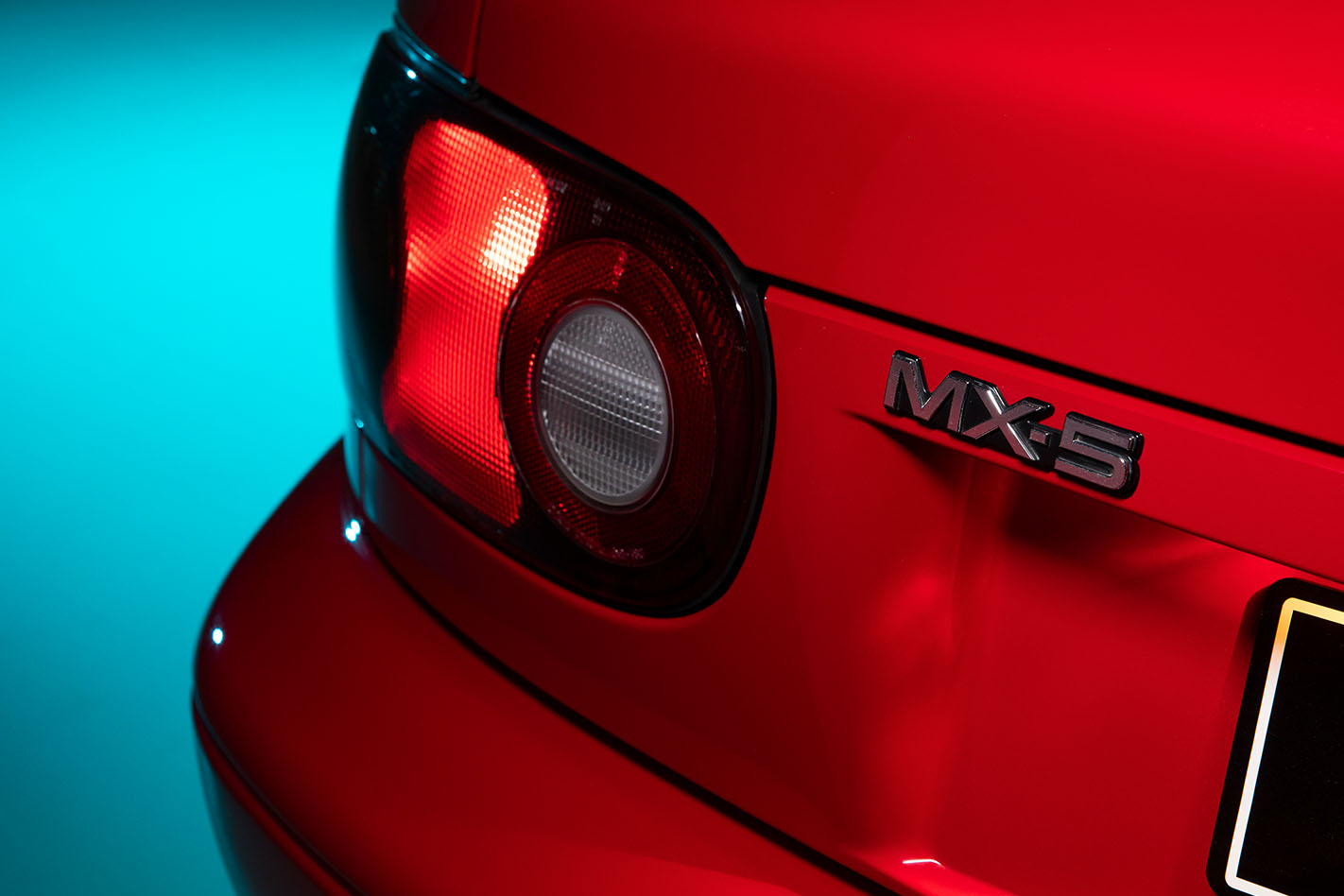
It was Hall who convinced Kenichi Yamamoto, the head of R&D during his ascendancy to the company’s helm, of the potential for a lightweight, affordable two-seat roadster. When the green light was only semi-lit, Hall jumped at the chance, even though the proviso was he could only work on the project before and after work, and in his lunch break.
“I learned this was how Yamamoto tested people,” Hall told Peter Robinson recently. “It was to see how much they really believed in their ideas; that they would work on them in their own time. I guess I passed the test.”
Of course, Hall’s thinking was bang on, and the NA MX-5 that resulted was a gem, imbued with a balance, involvement and feel-good factor that the world hadn’t seen in an affordable sports car for decades. It instantly cemented itself as a Wheels favourite, easily taking COTY in 1989, along with a string of international awards. Hall, meanwhile, is sad to report he is not the recipient of free MX-5s for life.
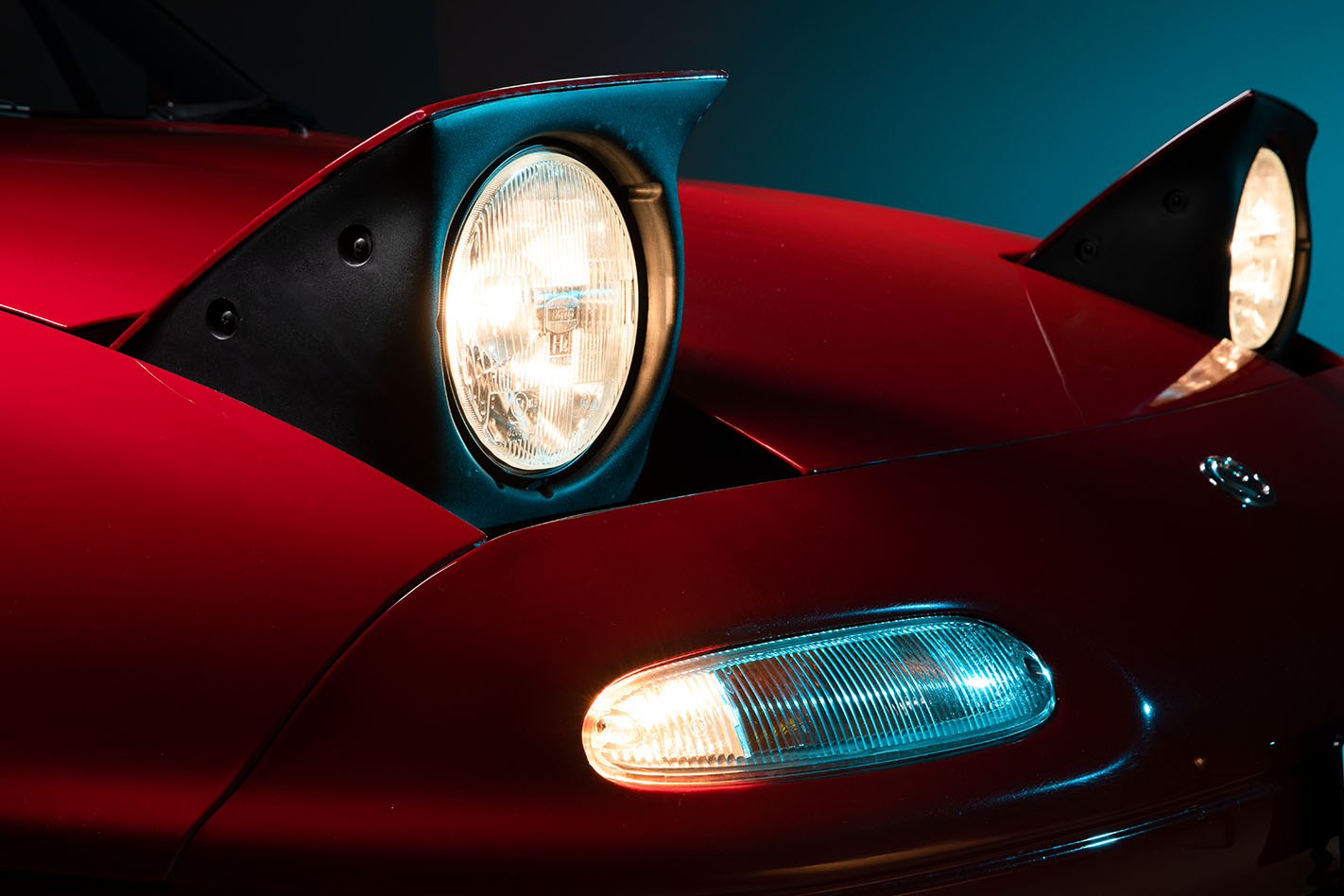
That aforementioned COTY-winning pair of 626 and Telstar – in GE guise for the Mazda and AX for the Ford – were back in the ring for another swing by 1992. Both cars introduced V6 engine options to the mid-size class, but this was very much a Mazda effort that secured the win for both brands.
One year earlier, though, had come the motorsport pinnacle that was somehow more than just a win for Mazda, but a triumph for Japan as a technological and engineering powerhouse. It’s hard to overstate the significance of the company’s epic victory in the 1991 Le Mans 24-Hour, with the green and orange 787B screaming at 9500rpm on its way to making Mazda the first Japanese manufacturer to win the legendary French endurance race.
Back here in Oz, the mid ’90s was a period where Mazda Australia flexed a bit of autonomous muscle, with former motorsport team manager Allan Horsley heading up Mazda Motorsport Australia. Horsley would be the force behind the turbocharged MX-5 SP of 2001, but well before that he secured the freedom and budget to develop a car specifically for the Australian market: the 1995 Series VI/FD RX-7 SP. Its mission was to compete in endurance production car racing, and homologation rules for the category would see 35 road-going models built, making the Australia-only RX-7 SP not just a rare and prized car, but a Japanese icon imbued with a dollop of Aussie go-fast know-how.
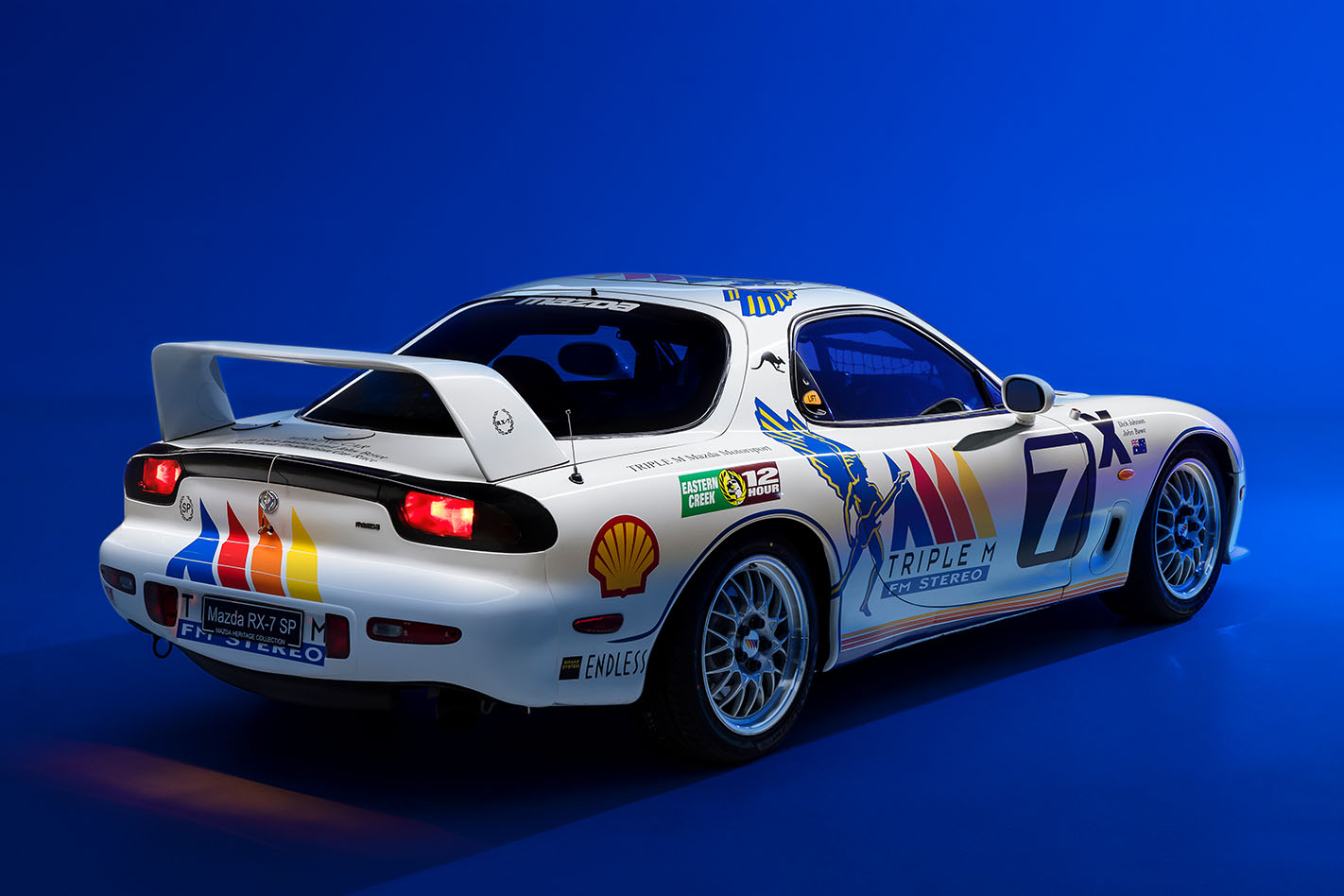
Former Wheels staffer Nathan Ponchard got a steer at Wakefield Park of the race car (pictured) driven to victory at the ’95 Eastern Creek 12-hour by John Bowe and Dick Johnson.
“I drove it on pretty tired Bridgestone semi-slicks,” Ponch recalls, “but it was still awesome. It made around 240kW, up from the standard SP’s 204. It was quite laggy at low revs, but its mid-range was monumental, and the back-slamming grunt on tap from 4800rpm to the 7500rpm cut-out was sensational. Great balance, too, but very easy to provoke into pretty instant oversteer when booting it out of the hairpin…”
It would be nearly a decade before Mazda delivered another car Wheels considered worthy of its COTY award, but when it did arrive, the RX-8 blew in as a fresh-thinking breeze; a practical, four-door 2+2 sports car with delectable dynamics and an atmo rotary that felt as if it wanted to spin right through its rev limiter and into double digits.
There was further COTY success – the MX-5, twice (NC in 2005; ND in 2016) where Wheels rewarded the fact that Mazda stayed true to the car’s original ethos, and despite improving livability and adding safety on both generations, didn’t allow it to become a bloated, dulled-down pastiche. And the CX-9’s win in 2017 proved the company could produce an exceptional SUV.
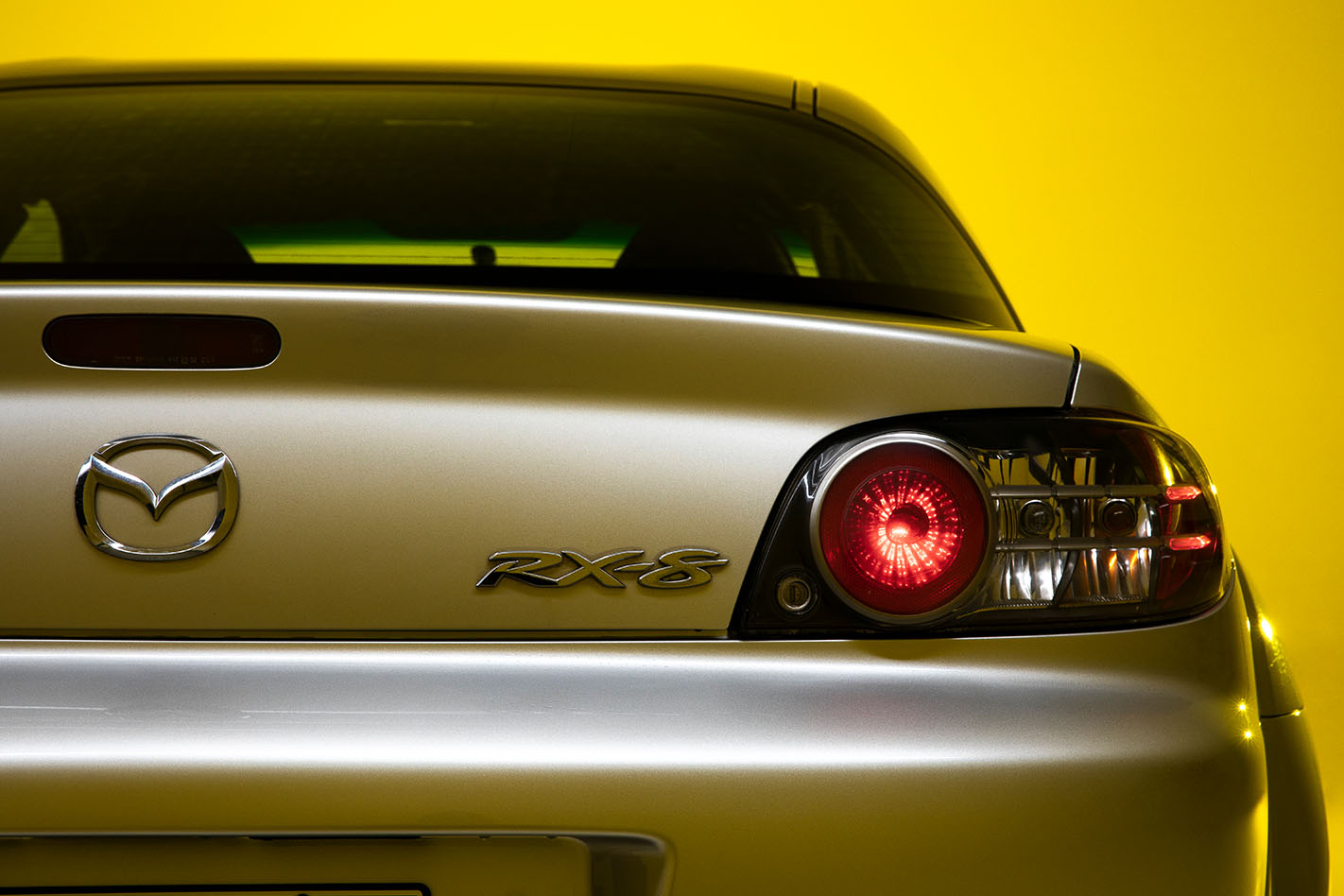
Of course, there have been stinkers and missteps. The stillborn Amati luxury division from the early ’90s has been described as “an open wound that the company is still ashamed of”, and the Eunos premium sub-brand only fared marginally better. Then there was the Roadpacer AP; unforgettable for all the wrong reasons, while who even recalls the badge-engineered two-door version of the US Ford Explorer passed off as the Mazda Navajo? No, us neither.
Yet what this historical brush-stroke doesn’t fully convey is what makes Mazda different to its Japanese competitors. It’s more than the contemporary product strategy, like largely ignoring the turbo-downsizing movement; instead taking on the far more ambitious task of developing a compression-ignition petrol engine. No, it’s more fundamental than that. It’s by having a committed, overarching strategy to design and build cars aimed at people who actually enjoy driving them. To create cars that are more than just transport; rather, machines that connect, at least at some level, in an emotive way, not merely a rational one.
And, that, we hope you’d agree, is a goal worth pursuing for another 100 years.
SIX OF MAZDA’S BEST
1967 MAZDA COSMO
Cosmo’s twin-rotor engine pumped out a modest-sounding 81kW and 130Nm, but thanks to it weighing just 960kg, 0-100km/h in under 9.0 seconds was considered pretty swift for the period. Houndstooth upholstery and skinny wooden wheel rim the epitome of period-cool.
1967 MAZDA R360
A tiny four-seater two-door, the R360 featured a minuscule 1753mm wheelbase, weighed a feathery 380kg, and was powered by a rear-mounted air-cooled 356cc V-twin producing 12kW. It was an instant hit, with 4500 examples sold in Japan on the day it was launched.
1989 MAZDA MX-5 (NA)
To ensure affordability, the original MX-5 kept the spec basic and concentrated on mechanical polish that the driver would appreciate on every drive, like the tactility of the steering, the willingness of the 86kW/136Nm 1.6-litre four, and the short-throw precision of the gearshift. In just the first year, 77,000 buyers lapped up these qualities.
1993 MAZDA 121 FUN TOP
When it was launched in late 1990, the second-gen Mazda 121 elevated itself comfortably clear of its budget predecessor. Its 1.3-litre four was a 16-valve development of proven 323 and Laser B-series powerplants, while its curved, roomy cabin would hit peak cool for the period when canvas-roofed Fun Top arrived in 1993.
1995 MAZDA RX-7 SP
The 35 road cars Mazda Motorsport Australia produced were homologation specials for this race-winning RX-7 SP, and featured a carbon airbox, lower diff ratio, Kevlar-shelled Recaros, a bigger intercooler, larger brakes, a revised nose cone and spoiler, freer breathing exhaust and re-flashed ECU. Yours for $99,790 in ’95.
2003 MAZDA RX-8
Former Wheels road-test editor Nathan Ponchard recalls the impact the RX-8 instantly had at COTY 2003: “The dynamics were next-level. The steering crispness was beautiful, the ride was brilliantly judged. It had awesome balance; a real dynamic sophistication we hadn’t seen before in this segment.”


